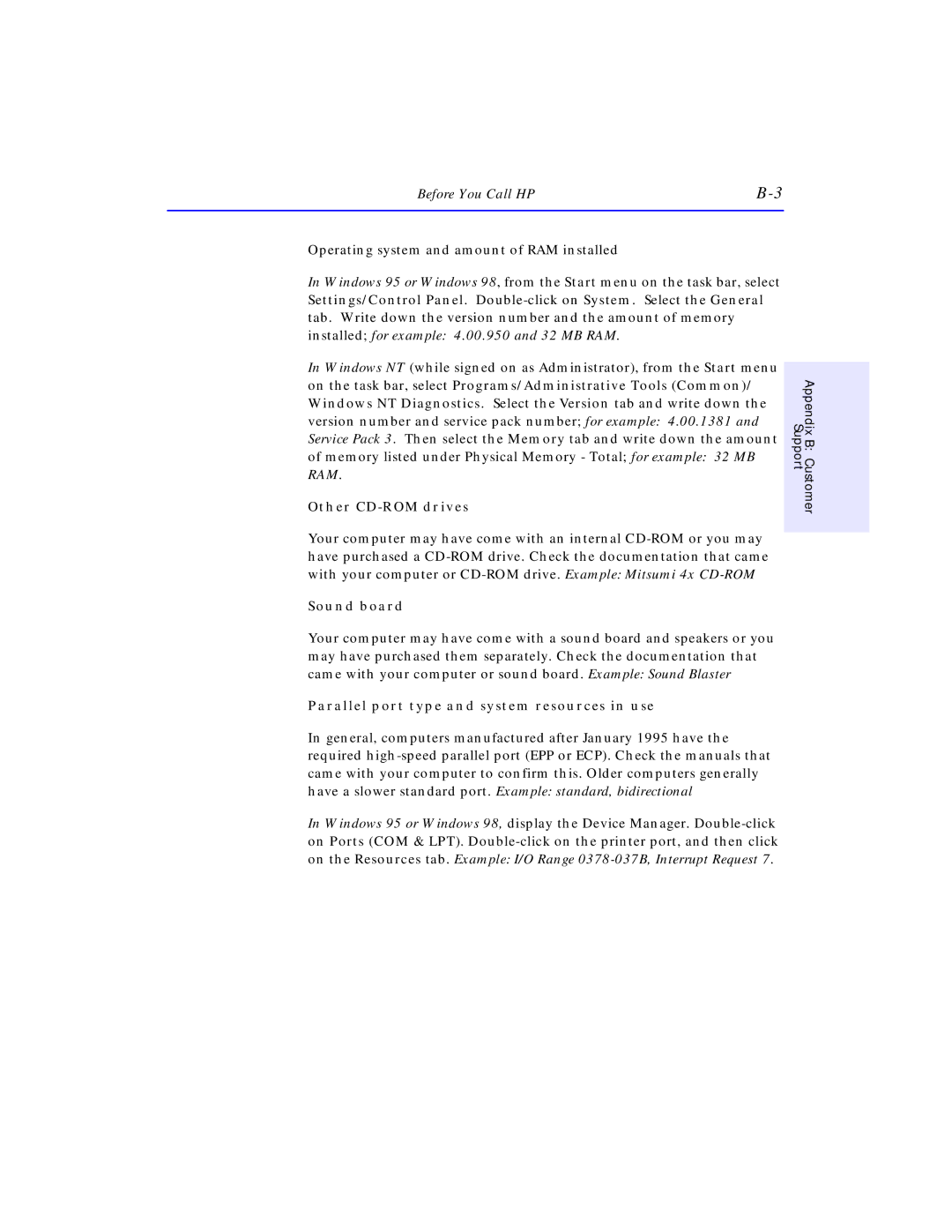Before You Call HP |
Operating system and amount of RAM installed
In Windows 95 or Windows 98, from the Start menu on the task bar, select Settings/Control Panel.
In Windows NT (while signed on as Administrator), from the Start menu on the task bar, select Programs/Administrative Tools (Common)/
Windows NT Diagnostics. Select the Version tab and write down the version number and service pack number; for example: 4.00.1381 and Service Pack 3. Then select the Memory tab and write down the amount of memory listed under Physical Memory - Total; for example: 32 MB RAM.
Other CD-ROM drives
Your computer may have come with an internal
Sound board
Your computer may have come with a sound board and speakers or you may have purchased them separately. Check the documentation that came with your computer or sound board. Example: Sound Blaster
Parallel port type and system resources in use
In general, computers manufactured after January 1995 have the required
In Windows 95 or Windows 98, display the Device Manager.
Support | Appendix B: Customer |
|
|
